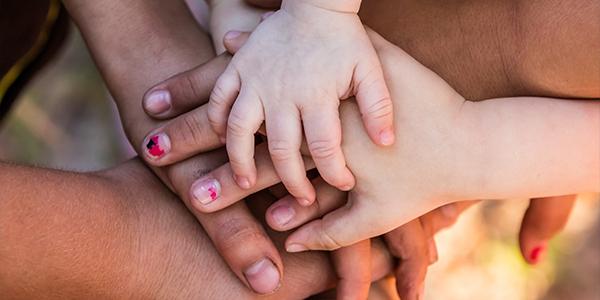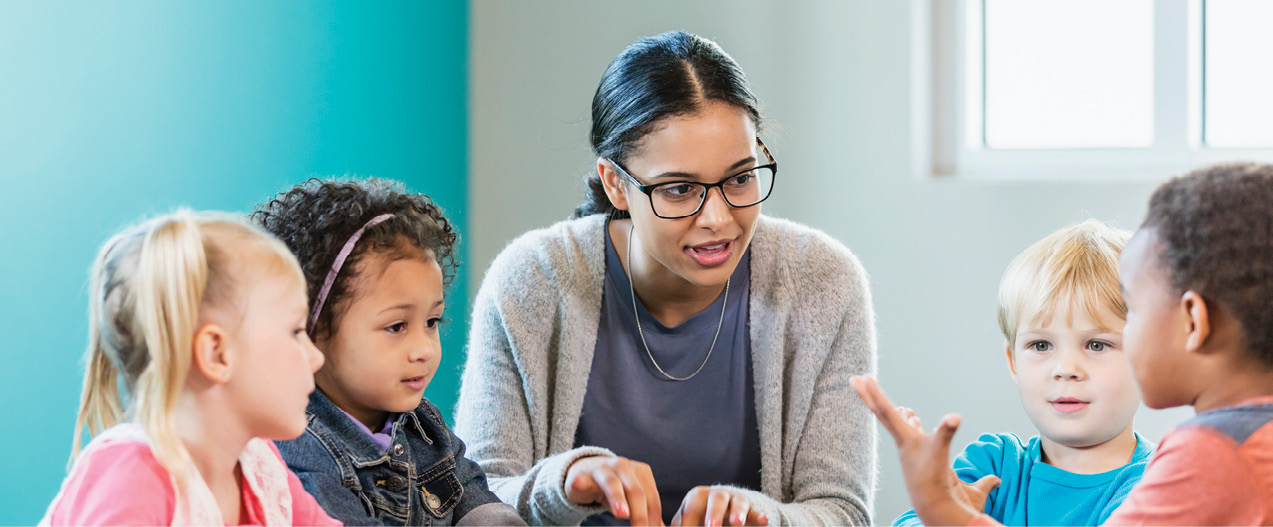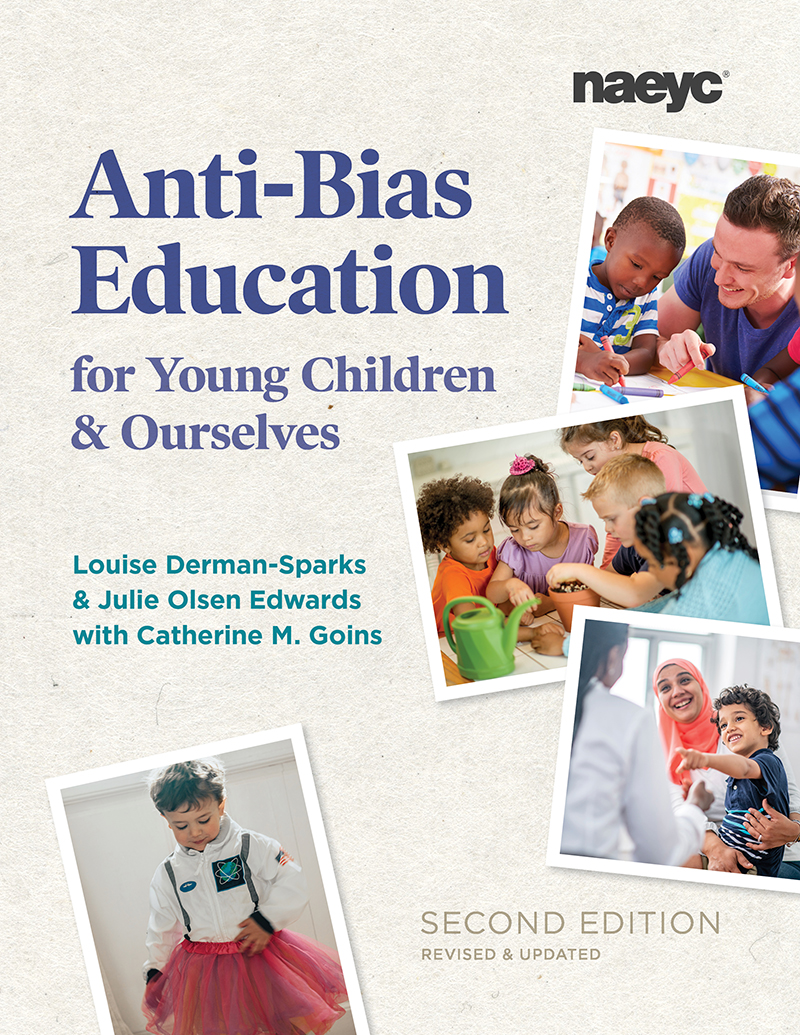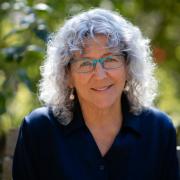Conversations that Matter: Talking with Children About Big World Issues

The current COVID-19 pandemic has produced a broad sense of unease and fear which transmits the message that the world is not safe (however much adults try to shield young children). Many children in quarantine with their families are experiencing exceptional amounts of screen time—and having to make sense of images, ideas, and terminology that can foster fear and prejudice. Included in these messages are racist ideas falsely attributing the cause of the coronavirus to people of Chinese descent and, by extension, to people of other Asian and Pacific ethnicities. However, as challenging as this period is, it also offers opportunities to engage young children in rich, meaningful conversations.
In addition, beginning in the month of May and beyond, even very young children heard about, saw on television, or saw in person the wide-spread demonstrations focusing on the need to end racism in police systems and other societal institutions. Children need help making sense of what they are seeing and hearing. These conversations also offer us important teachable moments to engage young children in discussion about their identities, human diversity, fairness and unfairness, and the right of people to stand up for their beliefs.
Children rely on their trusted adults to help them make sense of the confusing messages the world sends them about what and who are safe and okay. Children need direct, truthful responses shaped to meet their developmental level of understanding. But all too often, when children express their confusion, pre-prejudice, or fears, adults try to reassure them without addressing the specific anxiety and issue. For example, when someone sneezes, a child looks worried and asks, “Are we going to die?” The adult offers an unsatisfactory, generic reply: “Everything is okay. There’s nothing to worry about.”
Similarly, when a child makes a comment that reflects biased ideas about human diversity, many adults do not directly address the underlying issue. For example, while taking a walk around the block and passing people wearing masks, a 4-year-old White child points to a White person and asks her mother, “Is that a nurse?” Her mother replies, “No, that is one of our neighbors wearing a mask to help her and us stay well.” A little later, they pass a masked person with dark skin. The child points and states, “That’s a robber.” This time her mother stays quiet, not knowing what to say. Later, she calls her child’s teacher to ask him what she might have said.

The hurtful power of silence
Silence is a powerful teacher. What you do not say carries messages that are as strong as what you do say. Regardless of your intent, the unwillingness to talk with a child openly and directly about the world sends serious, strong, and potentially hurtful messages. When adults are silent or vague about things that children are seeing and trying to understand, children absorb the emotional message that the subject is not okay to talk about. This leaves children with an undercurrent of anxiety and unease, which are the earliest lessons about bias and fear. Consider:
- Silence robs children of a vocabulary to ask questions or talk about what is confusing or troubling to them.
- Silence forces children to figure things out on their own using their limited understanding of the world.
- Silence teaches fear—the subject is so unsafe the adults will not even talk about it.
- Silence forces children to rely on sources such as other children (the 6-year-old next door, a 10-year-old cousin) and the media (TV, advertising, videos) for information, including how they should feel and think about what is happening in their world. These are major sources of inaccurate and often stereotyped information.
General guidelines for brave conversations with children
Children depend on adults to help them figure out what things mean. Children’s curiosity, puzzlement, and anxiety provide rich opportunities for adults to respond to their attempts to understand what they observe happening in their world. Our responsibility is to give accurate, developmentally appropriate, matter-of-fact information that helps children develop the conviction that, when the world is unsafe, there are always people who are working to make it safe. They also need information and values that enable them to thrive in a world of diversity and to resist messages of bias and hate.
Children’s curiosity, puzzlement, and anxiety provide rich opportunities for adults to respond to their attempts to understand what they observe happening in their world.
Here are some basic guidelines to help you hold meaningful conversations with children in the face of difficult events and situations.
- Make it safe. As always, the first thing to do when children are distressed is to be a safe and reassuring presence for all the children.
- Find out what children know. Without judgment, find out what children are feeling and thinking and how they make sense of the situation. Listen carefully and verbally reflect children’s thinking back to them (however inaccurate). Give names to their feelings.
- Tell the truth. Say, “Here’s what I know about what is happening” or “This is what I think about what you saw/said/did.” Clarify misinformation as factually and simply as you can: “Some people call it the ‘China virus,’ but that is not a true statement. This virus is all over the world.” Think about what information children need for processing their feelings as well as for clarifying misinformation.
- Check back in with children. Check back in to find out how the children feel and think about what they have heard from you. Ask children if they have more questions—and proceed depending on what they say. Expect to have several conversations pertaining to this topic over time.
- State the justice issues. Talk about what is hurtful or helpful, what is fair or unfair in the situation. Share your own (or your school’s) values: “In our family, we. . .” or “In our classroom, we. . .”
- Give children something to do to make it better. Let children know there are people working to fix the problems. Ask them for their ideas of what they can do to help. Support children to do something age-appropriate about the situation.
Sometimes the words just do not come. You are uncertain how to simplify complicated issues or worry about saying something wrong. Regardless, do not let this wonderful opportunity slip away. Take a deep breath, repeat what you have heard from the child and then use phrases like the following:
- “This is really important, and I need to think about how we can talk about it.”
- “I’m not sure what words to use right now. But I am going to ask Candra to help me, and we will all talk about this tomorrow.”
- “You know, when I was your age no one helped me think about this, so I’m not sure what words to use. But I’ll think about this and we will talk later.”
And then—follow up! Bring up the issue and begin a new dialogue that may continue for brief periods over several days. See “Key Ideas to Share with Children” on below for important points to communicate during these conversations.
What is wonderful is that every time you engage in brave conversations like these, you, the children, and the other adults in the children’s lives all get better at listening and talking together about hard topics. And children learn to trust that their special adults are truly there to help them maneuver a complicated world.
Some Key Ideas to Share with Children
About COVID-19
The coronavirus pandemic has taken center stage in all of our daily lives. Children are surrounded by continual news in the media, discussions among family members, and behaviors such as sheltering at home, wearing masks, and social distancing. Children may also be experiencing the serious illness of family members, and, sadly, the death of loved ones. Here are guiding examples of talking points you can use in your own conversations with children:
- “There is a bad illness happening near us. It makes some people very sick. People can get sick from tiny germs called viruses, which are too small to see. The viruses float in the air when sick people cough or breathe on other people.”
- “It’s the grown ups’ job to keep you well. That’s why some schools and stores are closed for a while so that there aren’t a lot of people in the same place. It is also why we wear masks when we go outside and do not get too close to other people. And it is why we wash our hands a lot to keep any germs from getting inside of us.”
- “Everyone can help. You can too! You help keep yourself and other people from getting the virus germ when you wash your hands several times each day. You help when you wear a mask when we are with people who do not live with us. You help keep everyone well when you do not stand too close to people who do not live with us.”
- “We all feel very sad that Bubbe (Yiddish name for grandmother) is very sick in the hospital and we cannot see her. We can tell stories about her, write about our feelings, draw a picture of her, and keep wishing (or praying) that she will get better.”
- [If loved ones die]: “Bubbe couldn’t get better from being sick with COVID-19. She died, which means that we will not see her any more or be able to hug her or play with her. Grandma will still always be in our heart. Crying is okay to help us with how sad we feel.” (For some families, talking about being in heaven may be appropriate as well.)
About Anti-racism Demonstrations
There are many issues involved in the demonstrations protesting racism: a Black man was killed by a police officer; people marched in the streets saying that it was wrong; some people damaged property and stole; some protesters were arrested or attacked. Always ask the child what they know about the protests so you can center your response on the specific part of the protests that the child is focused upon. Here are guiding examples of talking points you can use in your own conversations with children:
- “A man named George Floyd was killed by a police officer. Many people are very angry that this happened. George Floyd was African American (or Black). That’s what people are talking about when they say ‘Black Lives Matter.’”
- “A lot of people also are angry that many other Black men and women have been killed by police officers when they shouldn’t have been. They also are angry that Black people are not always treated fairly when they go to a doctor, when they are in school, or when they need a place to live. So many, many people are making signs and marching in the streets so that everyone will know that they want the world to be fair.”
- “All people are the same and all people are different, and everyone needs to be treated fairly. You cannot tell what a person is like by the way they look. Some people think one way, some another—in our home or school, here is what we think.”
- “A few people who are angry are not using their words. Instead, they did dangerous things like stealing from stores and starting fires.”
- “Scary things happen in the world, but there are always people working to make it safe and fair. There are things you can do to help.”
 This blog is adapted from Chapter 4 of Louise Derman-Sparks and Julie Olsen Edwards with Catherine M. Goins, Anti-Bias Education for Young Children and Ourselves, 2nd edition. This classic resource, expanded and updated, is a guide to building strong anti-bias early learning programs, including learning to know yourself. This book is available now in print and and an e-book is coming soon, learn more.
This blog is adapted from Chapter 4 of Louise Derman-Sparks and Julie Olsen Edwards with Catherine M. Goins, Anti-Bias Education for Young Children and Ourselves, 2nd edition. This classic resource, expanded and updated, is a guide to building strong anti-bias early learning programs, including learning to know yourself. This book is available now in print and and an e-book is coming soon, learn more.
Julie Olsen Edwards, coauthor of Anti-Bias Education for Young Children and Ourselves, was on the faculty of Cabrillo College’s early childhood education department for 45 years. A lifetime activist for children and families, she continues to write, teach, and consult on issues of equity, diversity, and anti-bias.

Louise Derman-Sparks, MA, has worked with children and adults in early childhood education for more than 50 years and is a faculty emerita of Pacific Oaks College. She is coauthor of several books, including Leading Anti-Bias Early Childhood Programs: A Guide for Change, Anti-Bias Education for Young Children and Ourselves, and Teaching/Learning Anti-Racism: A Developmental Approach.
